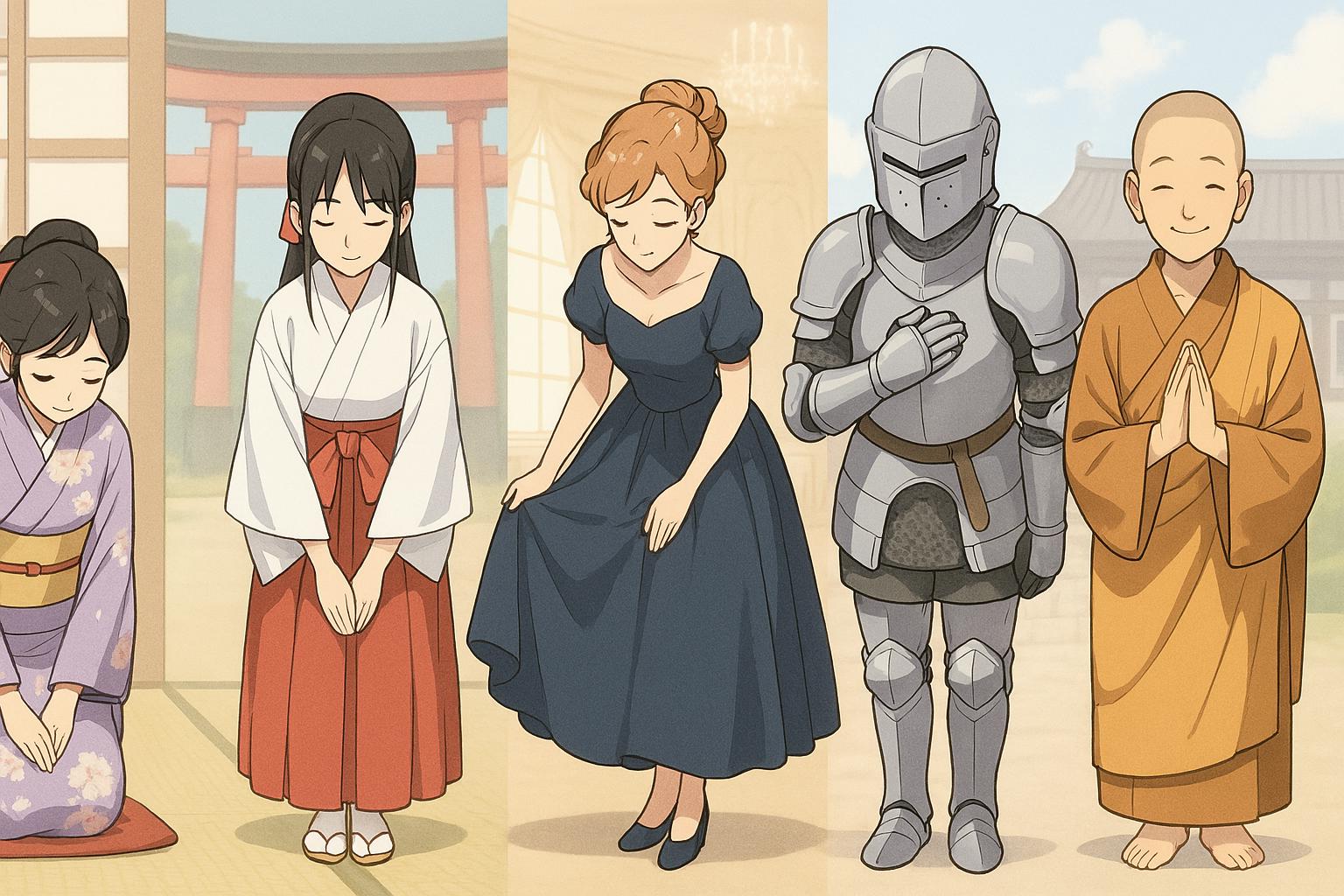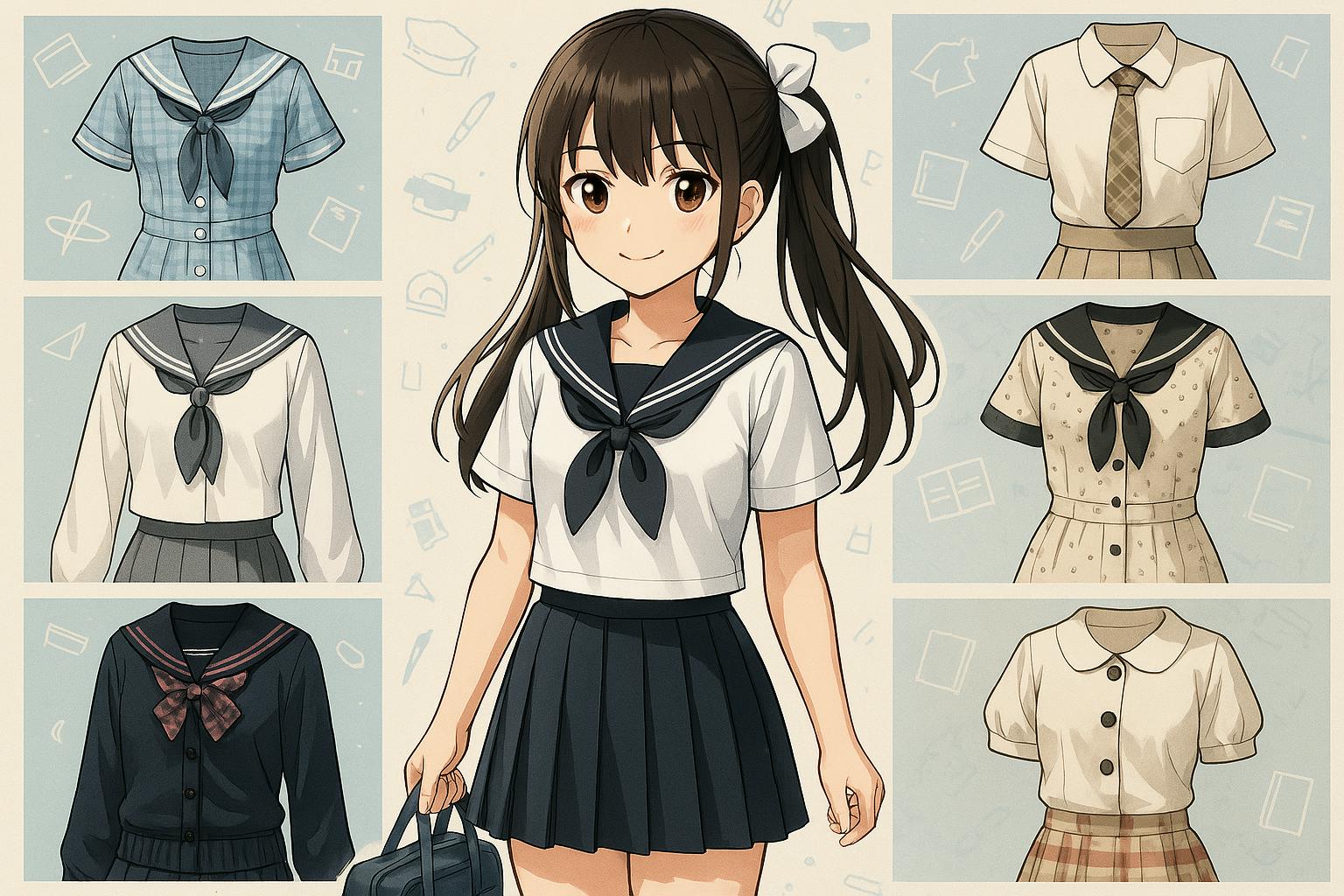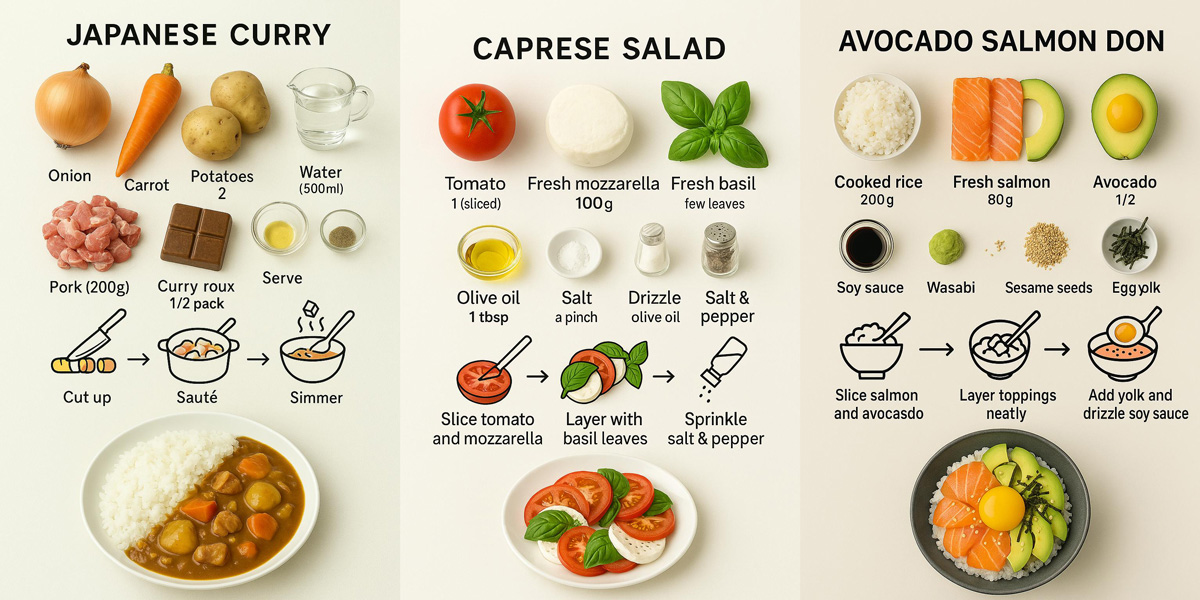本記事ではChatGPTの画像機能で使える「礼節のある動作」プロンプト集をご紹介します。
ひと口に「お辞儀」といっても、その意味はさまざま。
感謝の気持ちを表すお礼、心からの謝罪、歓迎や祈りの場面など――
動作ひとつひとつに込められた感情や文化的背景があります。
本記事では、そうした動作のプロンプトをただ紹介するだけでなく、
「なぜその所作が礼儀として大切なのか」という文化的・歴史的な背景にも触れています。
イラストや創作においては、ポーズやしぐさだけでなく、
その動きが持つ意味やステートメントも作品の深みを決める大切な要素です。
シンプルでありながら奥深い、さまざまな礼節の動作を、
イラスト付きのプロンプトとともに実用的かつ学びある形でご紹介していきます。
ぜひ、創作や資料づくりにお役立てください。
シーン別|礼節ある動作プロンプト一覧(お辞儀・感謝・謝罪など)
| 種類 | 日本語解説 |
|---|---|
| 挨拶・はじめまして | 軽くお辞儀している |
| 挨拶・親しみある挨拶 | 微笑みながら軽く会釈 |
| 感謝・丁寧な感謝 | 両手を前で深くお辞儀 |
| 感謝・静かな祈り感謝 | 手を合わせ目を閉じる |
| 謝罪・深い謝意 | 正座で深く頭を下げる |
| 謝罪・控えめな姿勢 | 手を揃え下を向く謙虚な姿勢 |
| 案内・紹介 | 横に手を差し出す |
| 案内・贈呈・紹介 | 両手で差し出す |
| 歓迎・迎え入れる動作 | 手を上げて歓迎 |
| 教室・職場の丁寧な礼 | 椅子に座って深くお辞儀 |
| 教育現場 | 教師が生徒に礼 |
| 無言の儀式・式典 | 静止した無言の敬意 |
初対面の挨拶・お迎えの動作
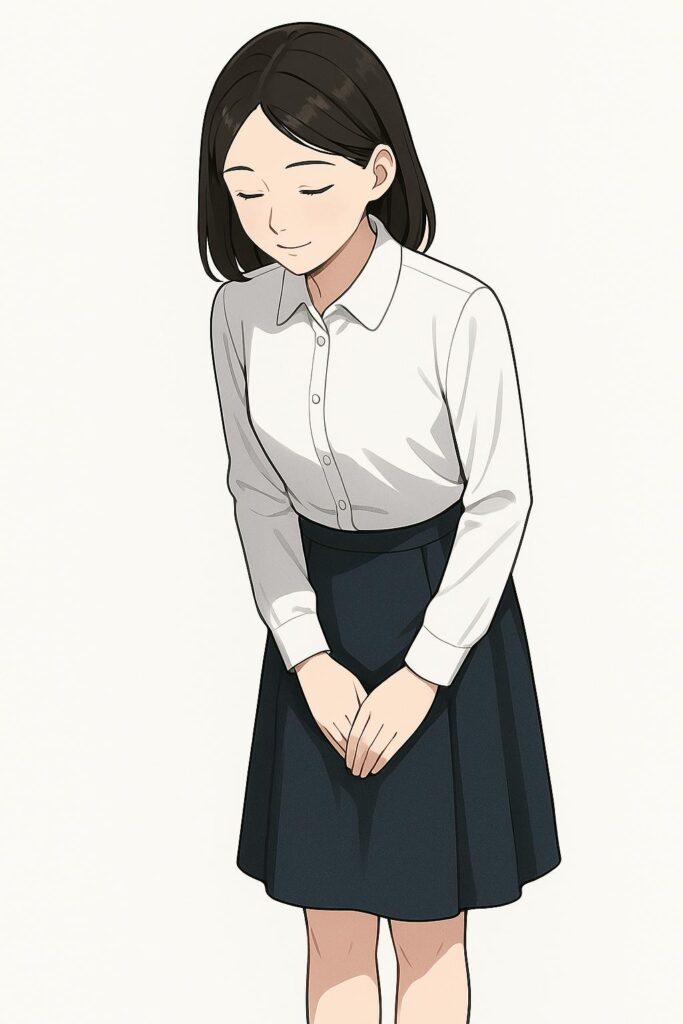
slightly bowing
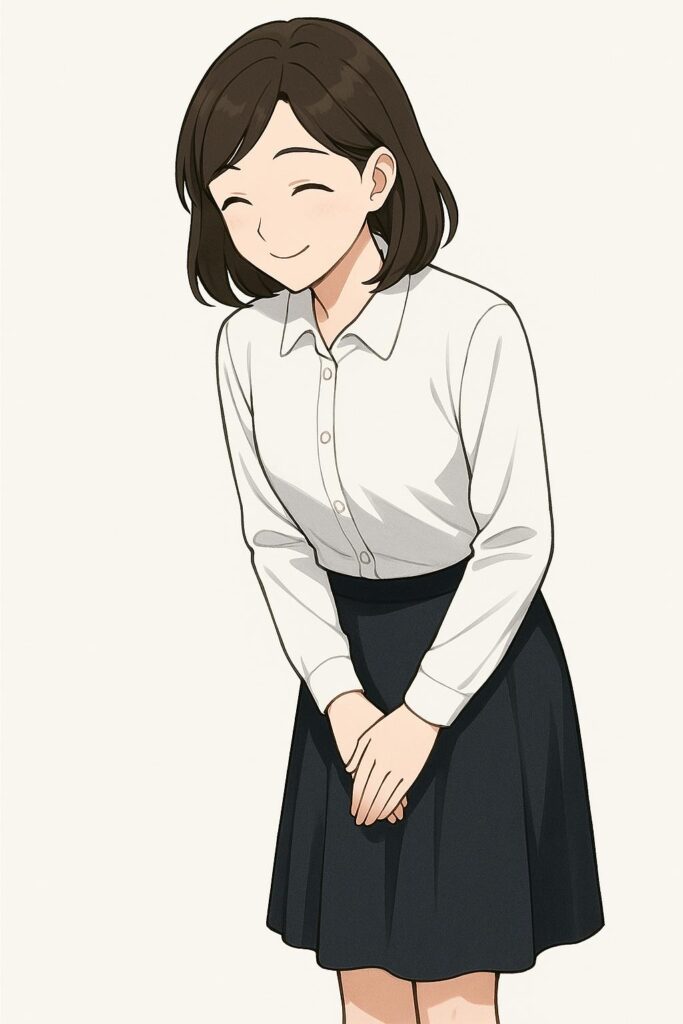
smiling while bowing lightly
感謝・お礼・謝罪・お詫びのポーズ
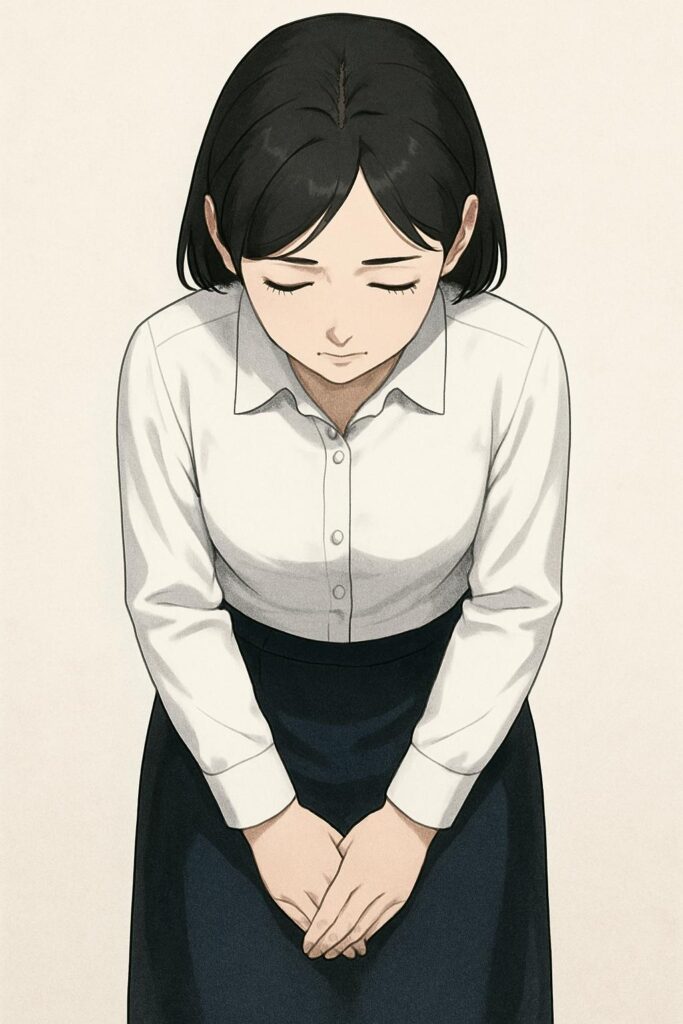
deeply bowing with hands in front
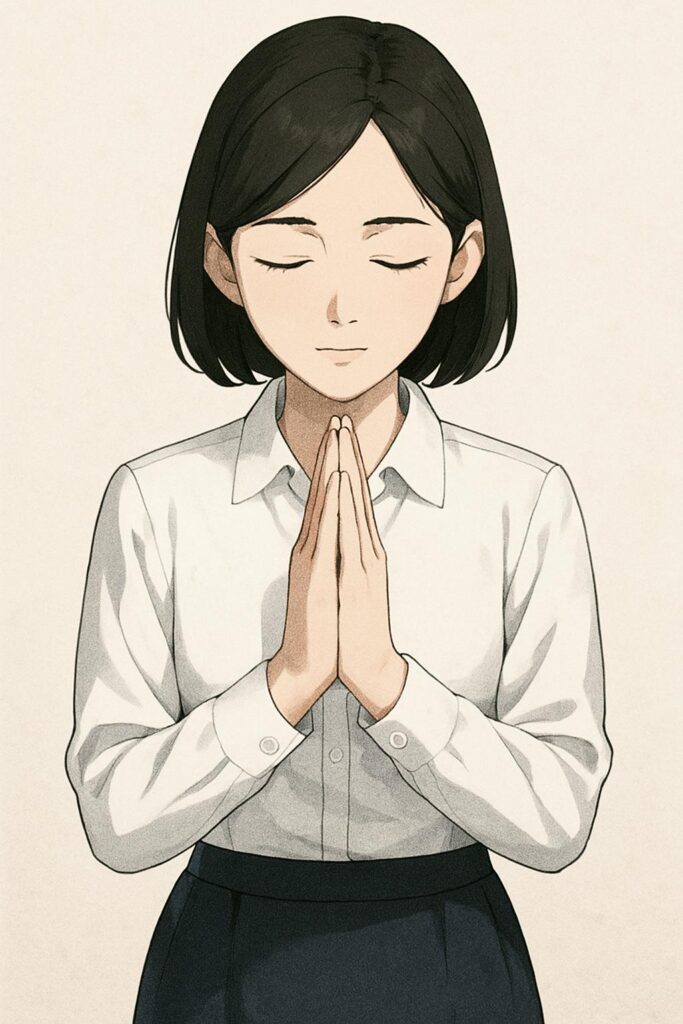
hands together in front of chest, eyes closed
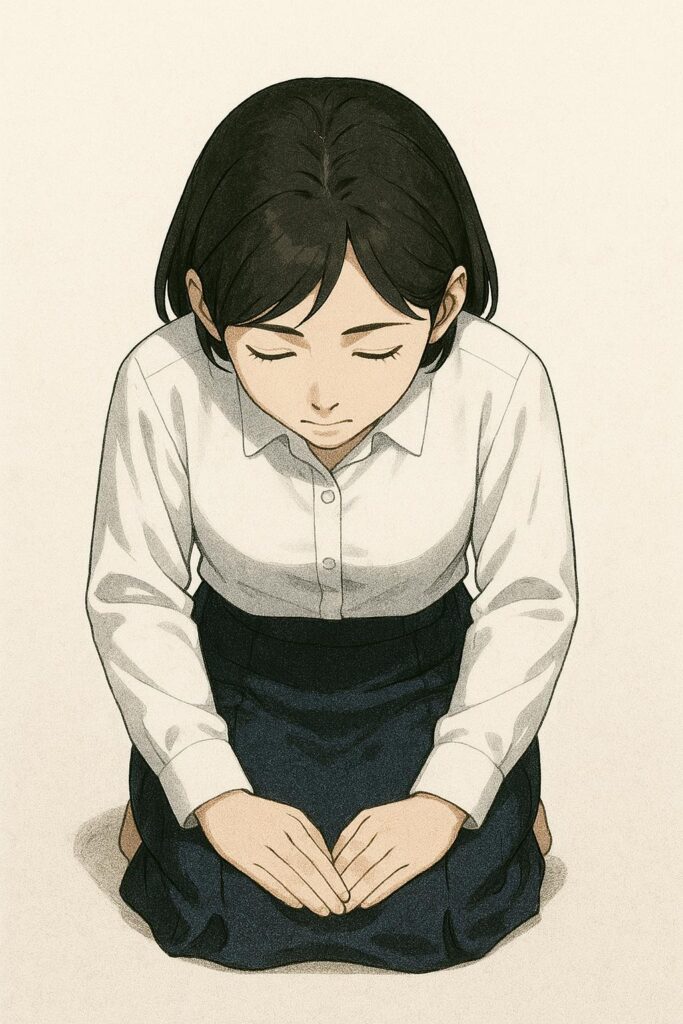
kneeling and bowing deeply
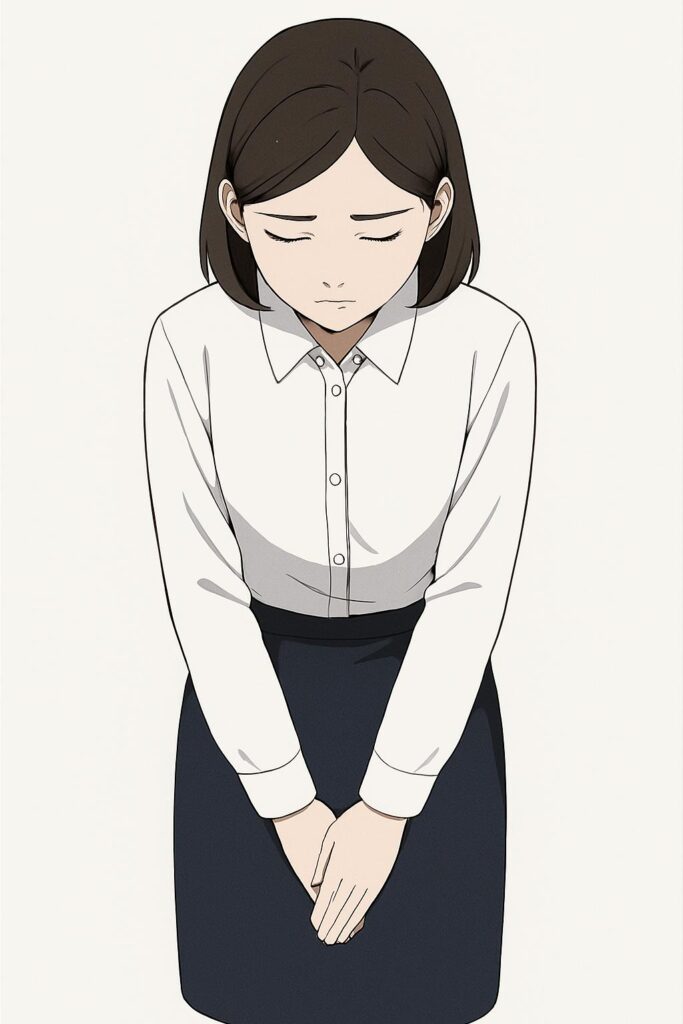
looking down humbly with hands folded
紹介・贈呈・案内
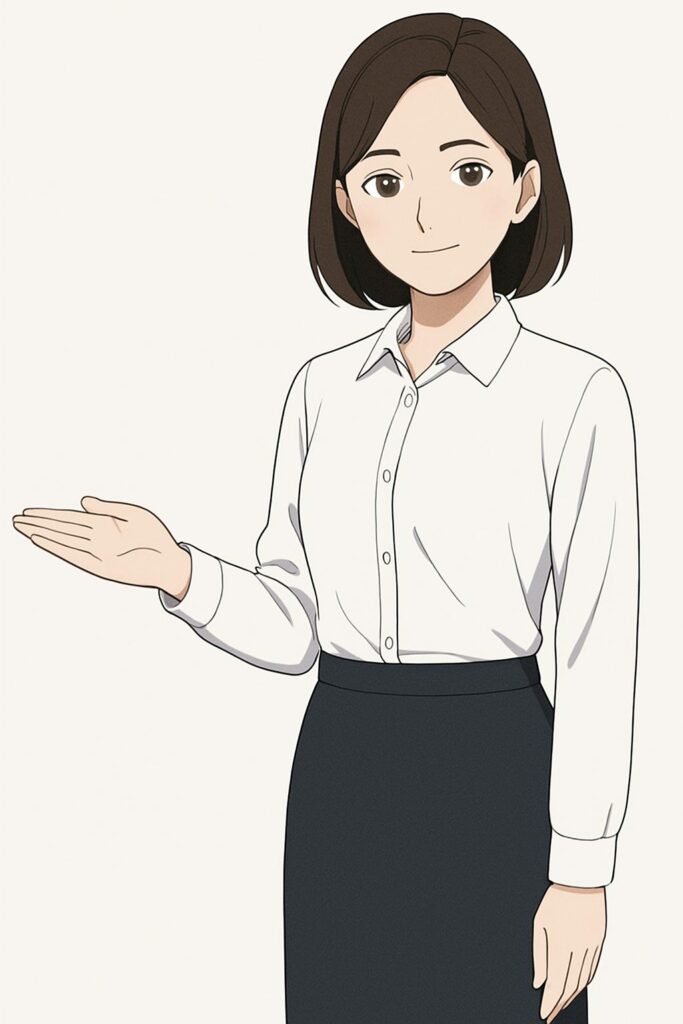
offering hand politely to the side
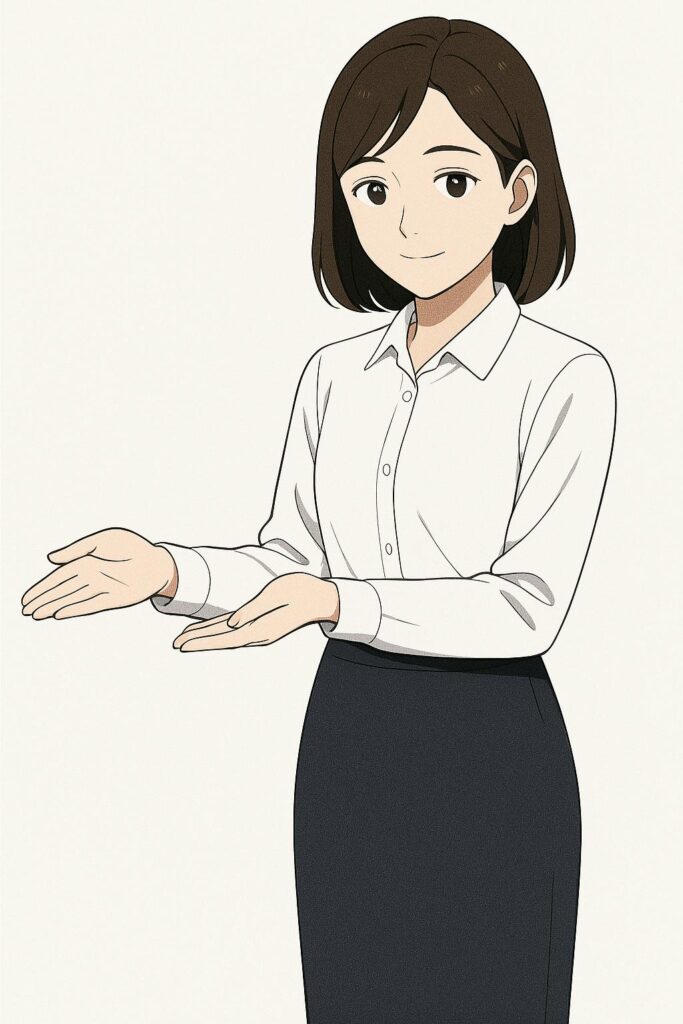
presenting with both hands gracefully
教育・式典・無言の礼
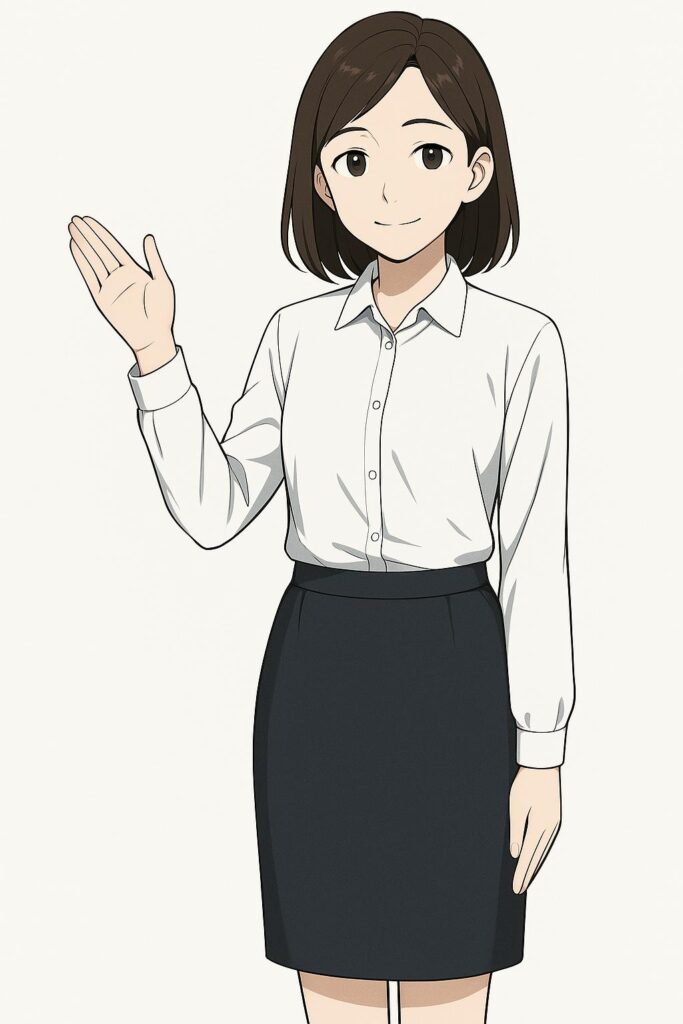
standing with one hand raised in welcome
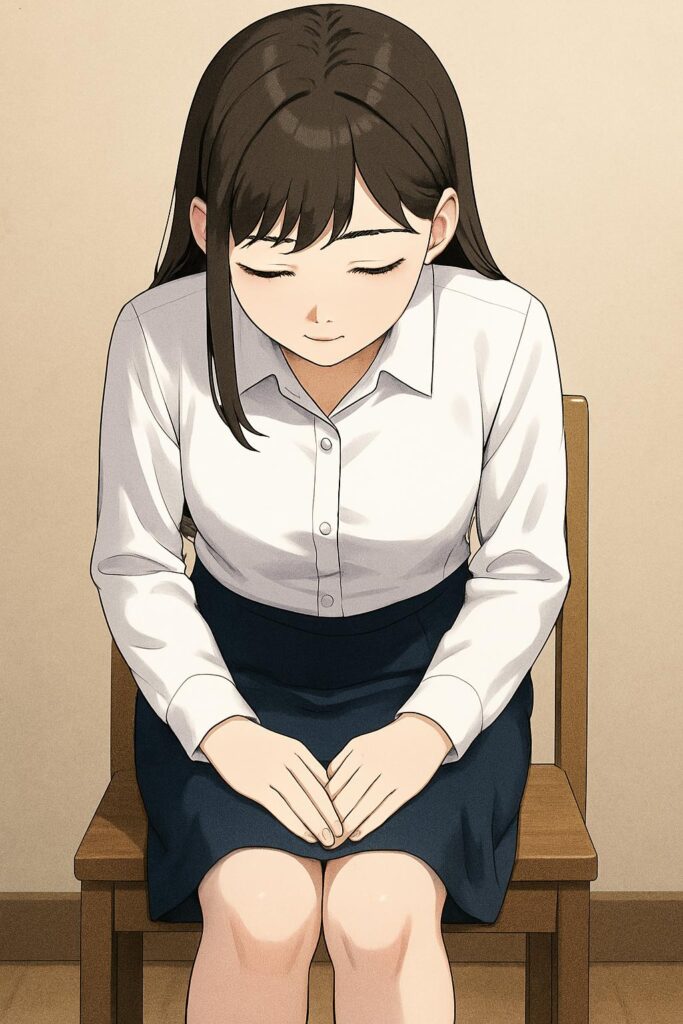
hands on thighs, bowing deeply while seated
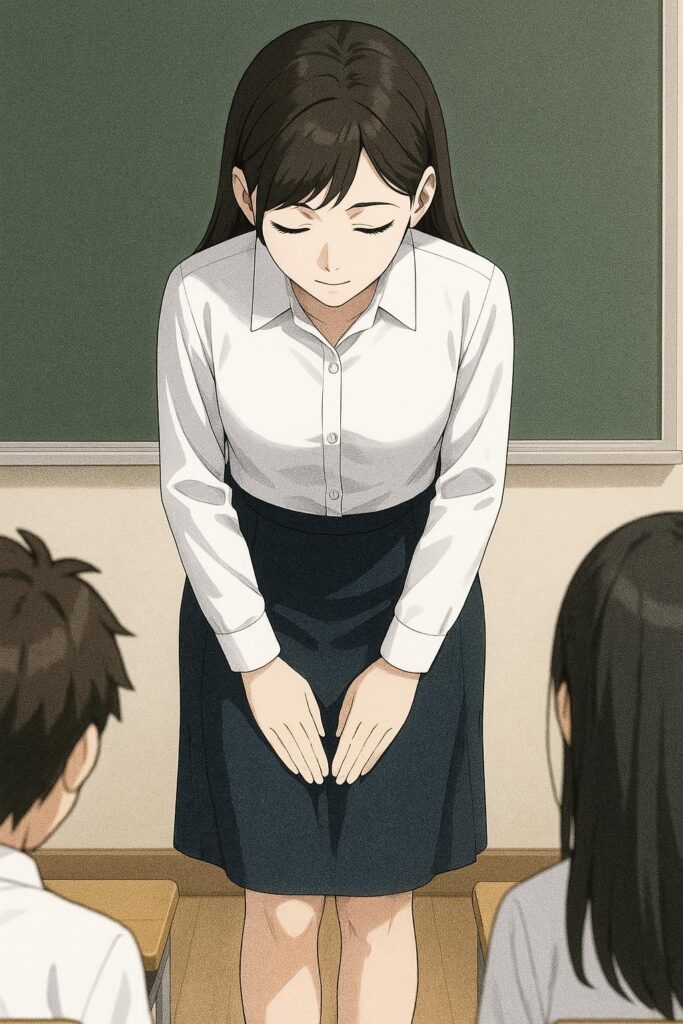
teacher bowing to students in classroom
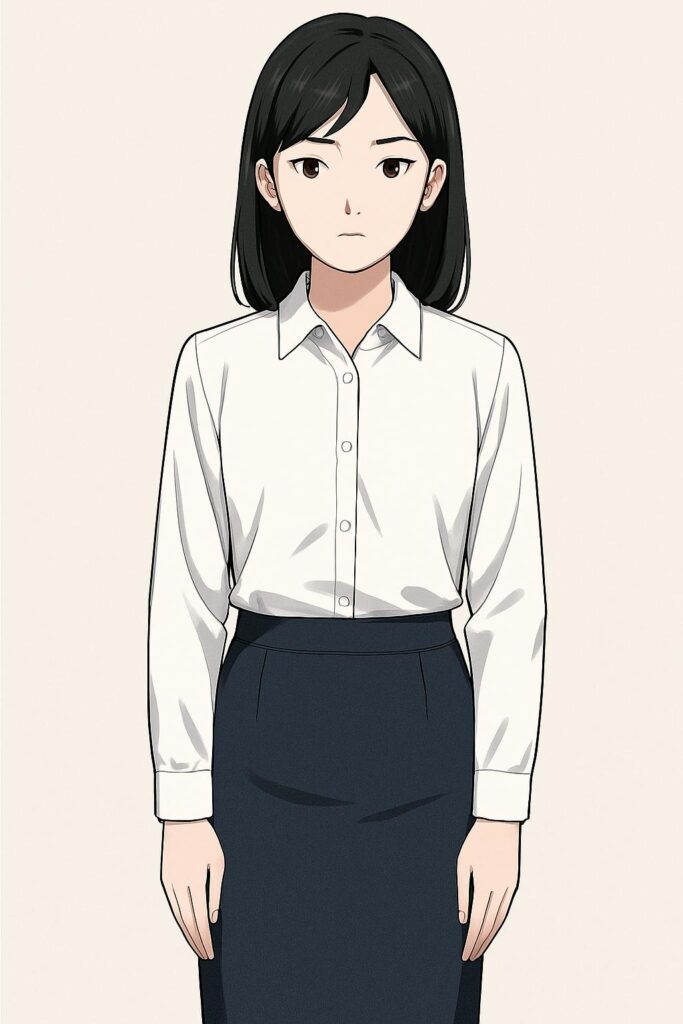
standing straight, arms at sides, looking forward seriously
ポーズ&動作タイプ別|プロンプトで見る礼儀のしぐさ
| 種類 | 日本語解説 |
|---|---|
| 正座でのお辞儀 | 和風の正座礼 |
| 正座で深く頭を下げる | 土下座に近い丁重な謝罪 |
| 正座で目を閉じうつむく | 落ち着いた姿勢での礼 |
| 立ち姿・手を前で揃える | 控えめな立ちポーズ |
| 立ち姿・手を後ろに組む | 落ち着いた礼の立ち姿 |
| 手を胸に当てて礼 | 心を込めた礼 |
| 手を胸に両手添える | 深く心からの敬意 |
| 手を背後で組み、うつむく | 厳粛な姿勢 |
| 手を膝上で組み、目を閉じる | 瞑想的な座礼 |
| 腕を横に下ろしながら礼 | フォーマルな動作 |
| 片足を前に出しながら礼 | 欧風紳士スタイルの礼 |
| 右手が上で手を重ねて礼 | 和風の礼法 |
| 両手を合わせて合掌し礼 | 仏教的な挨拶 |
正座・座りの動作
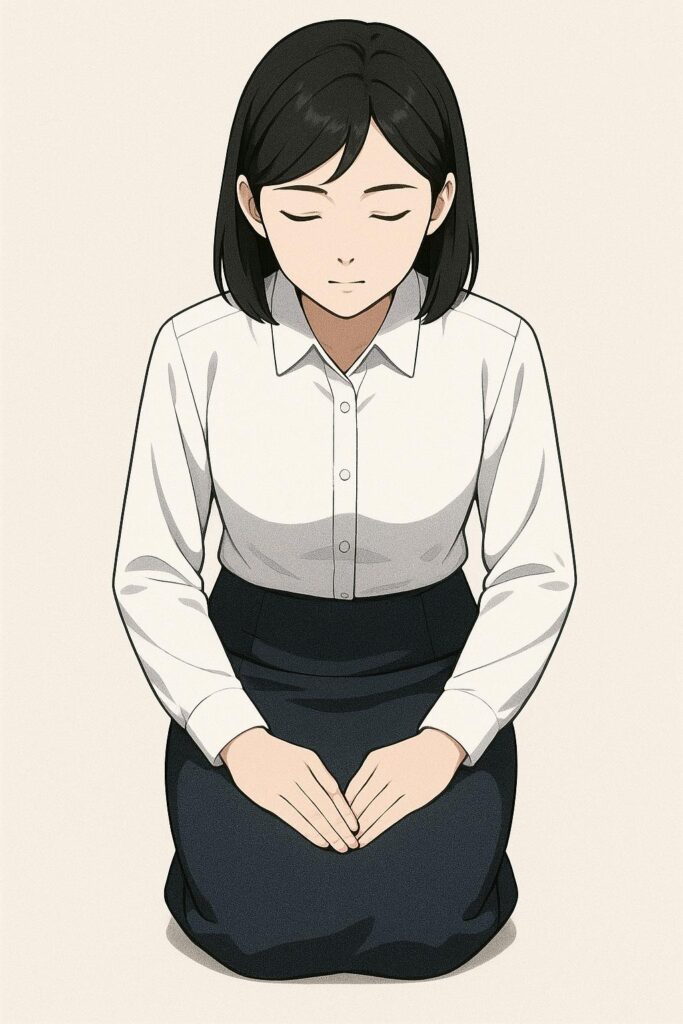
bowing in seiza (traditional Japanese sitting)
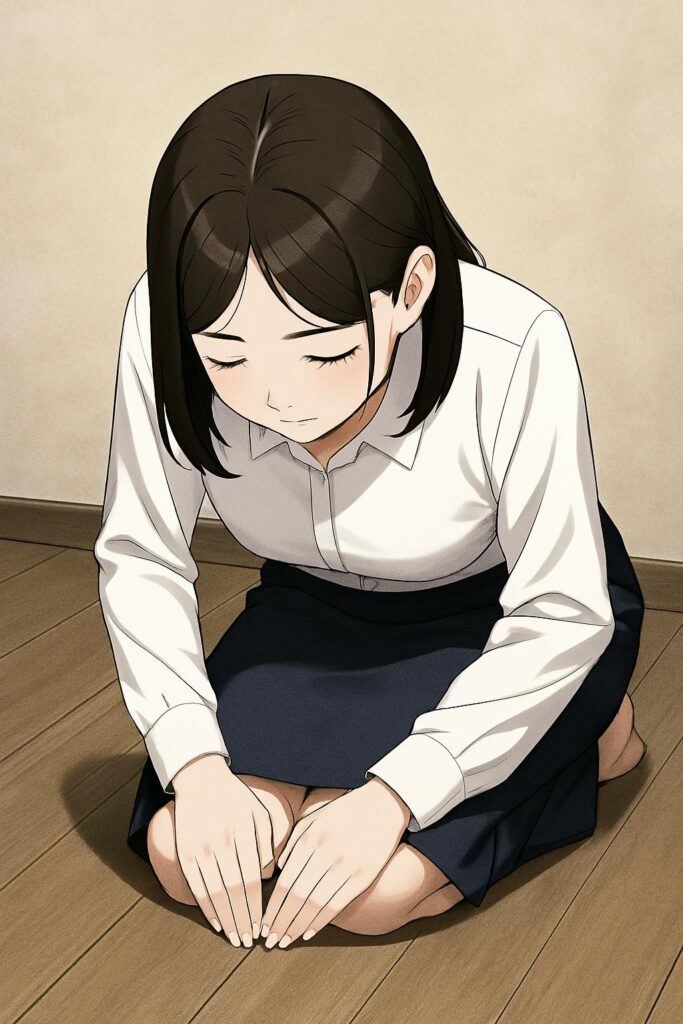
placing both hands flat on the floor in seiza
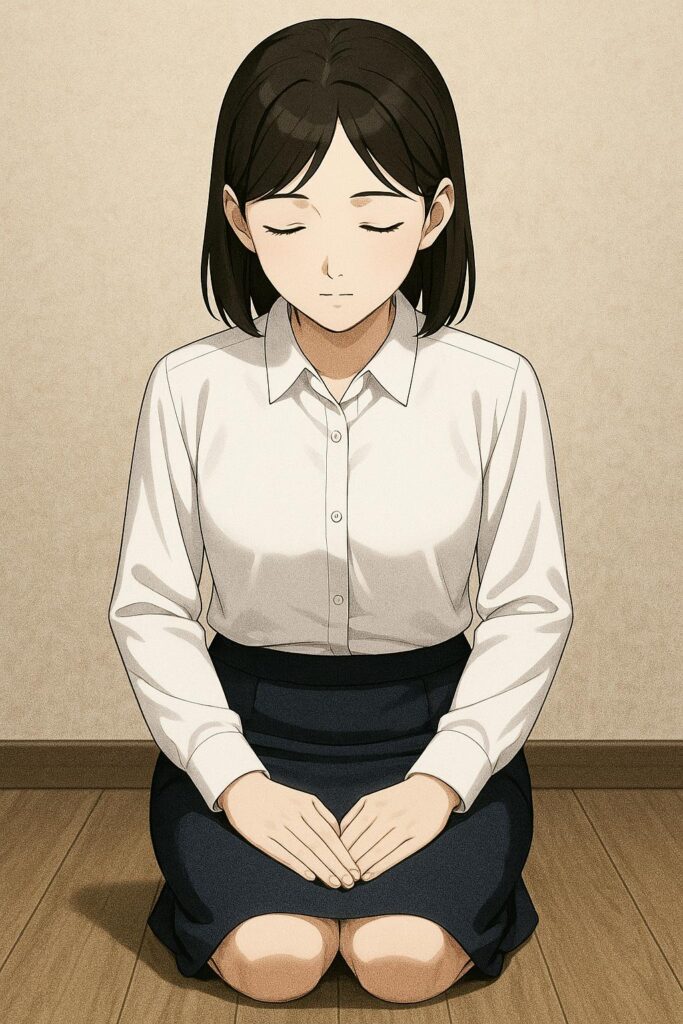
kneeling with both hands on lap, looking downward
立ち姿の礼
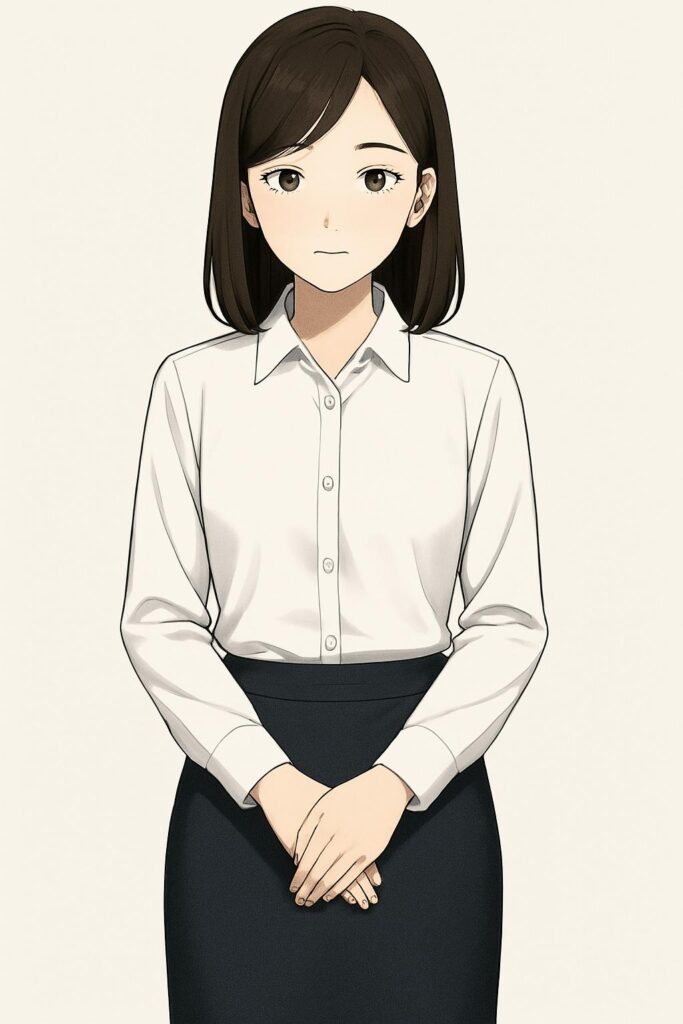
standing politely with hands folded in front
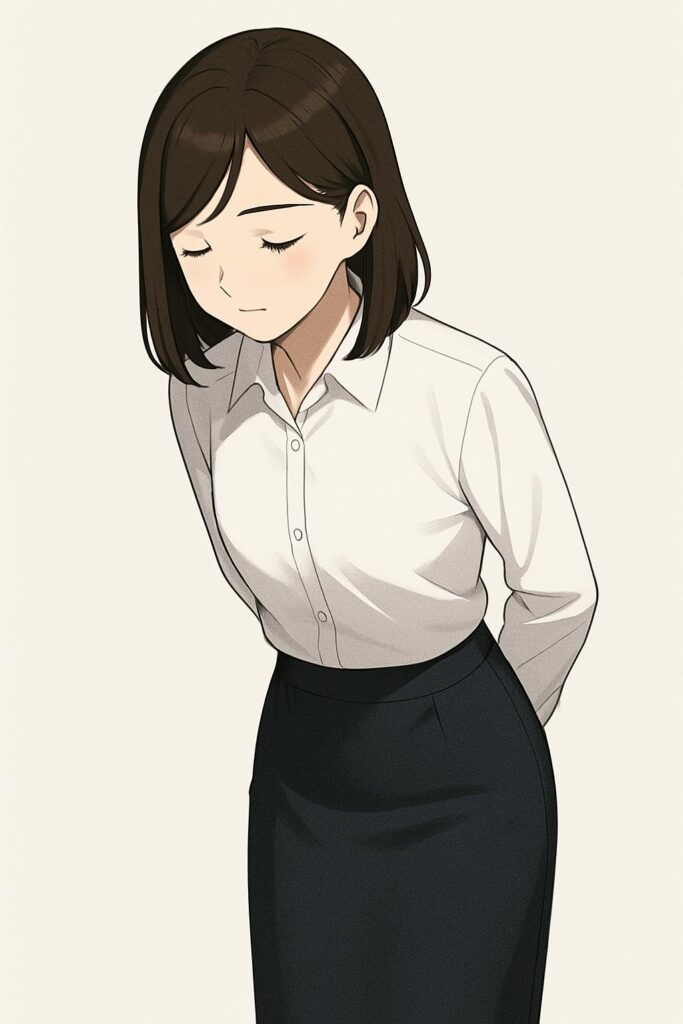
standing with both hands behind back, bowing slightly
手の動き・胸や背中の仕草
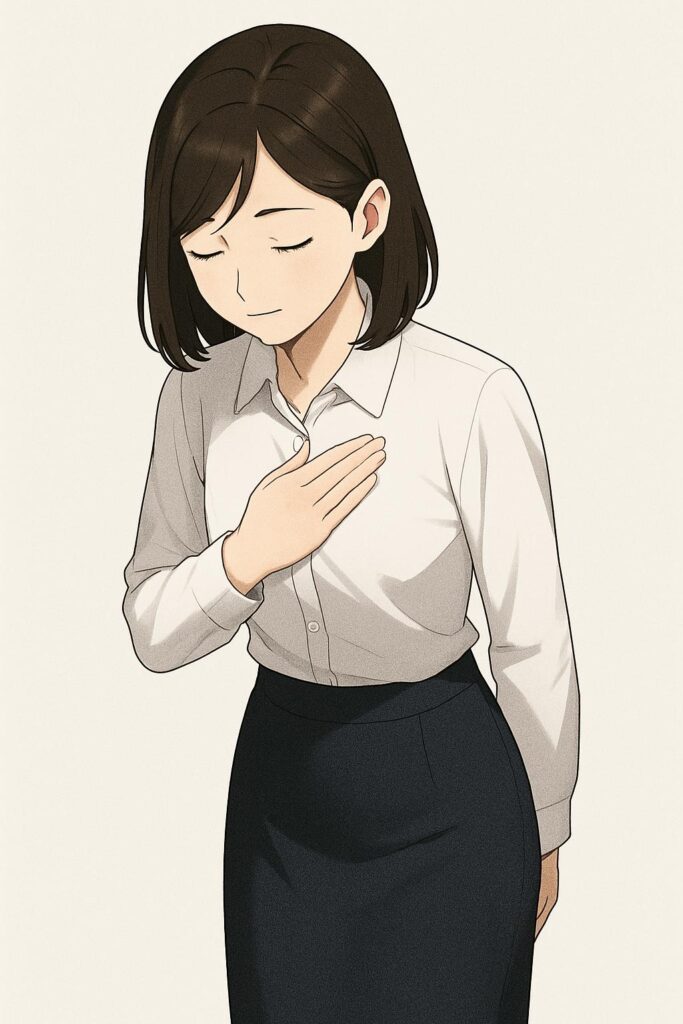
placing one hand on chest while bowing
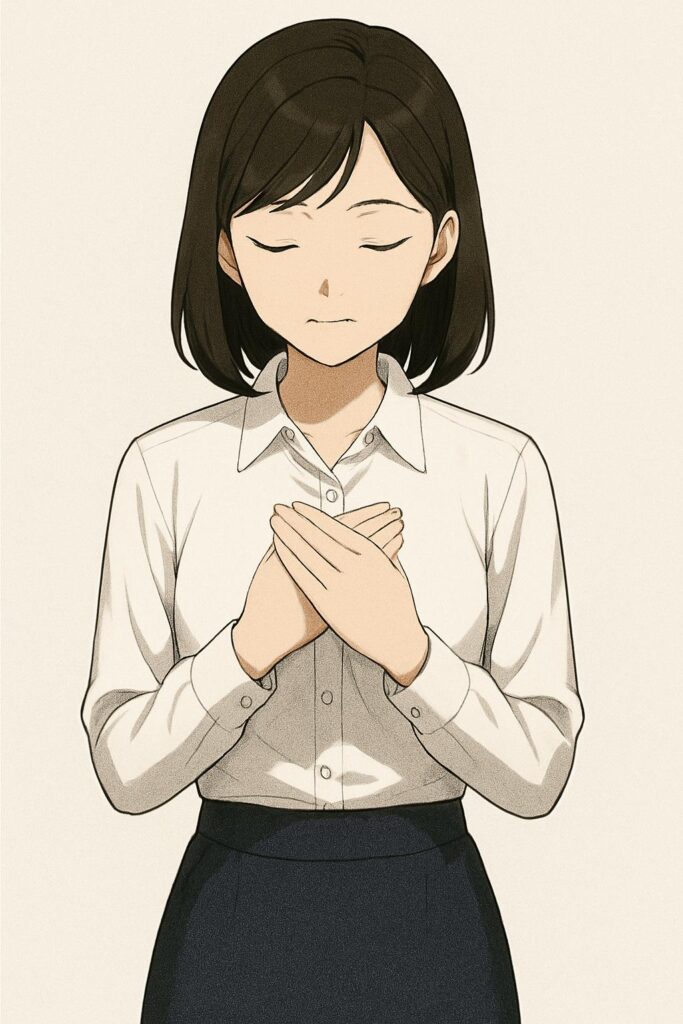
placing both hands on chest, eyes closed
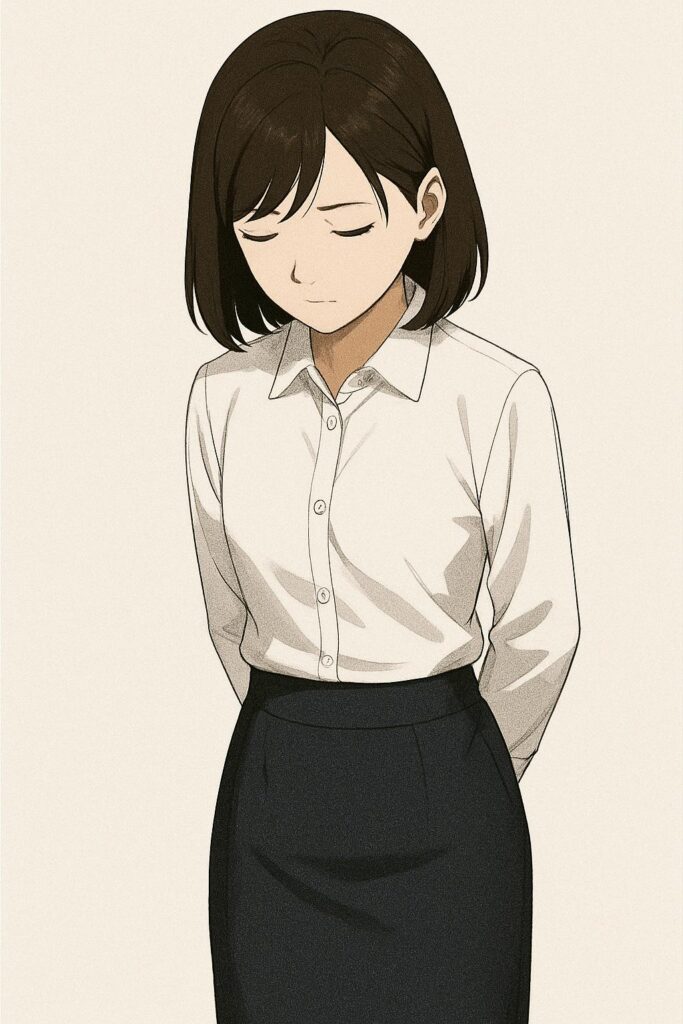
standing with hands clasped behind back, head lowered
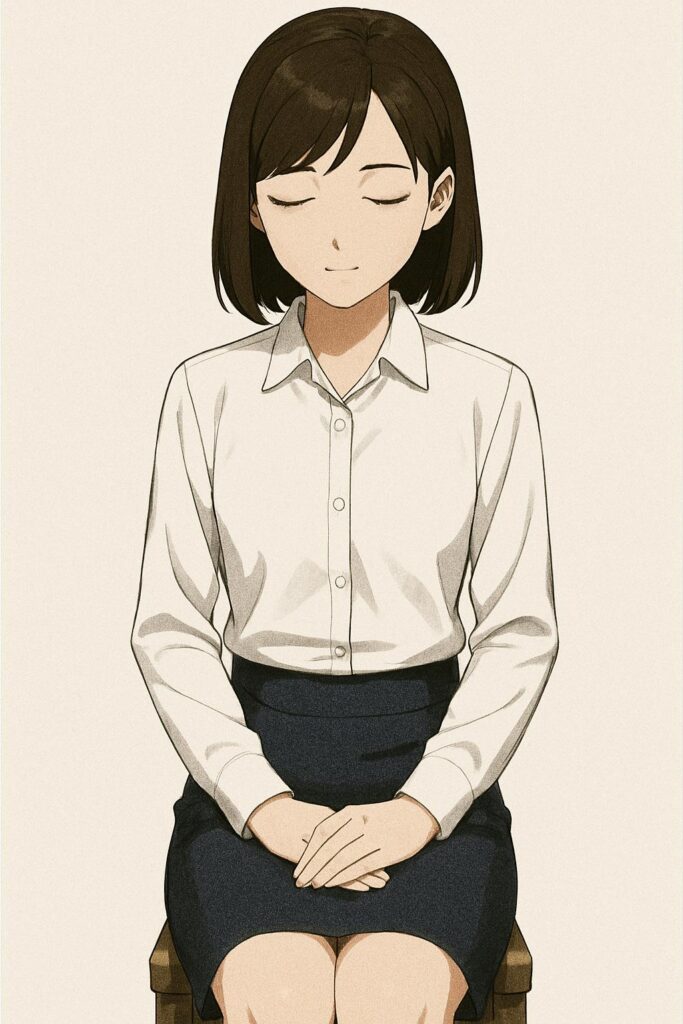
sitting with hands folded in lap, eyes closed
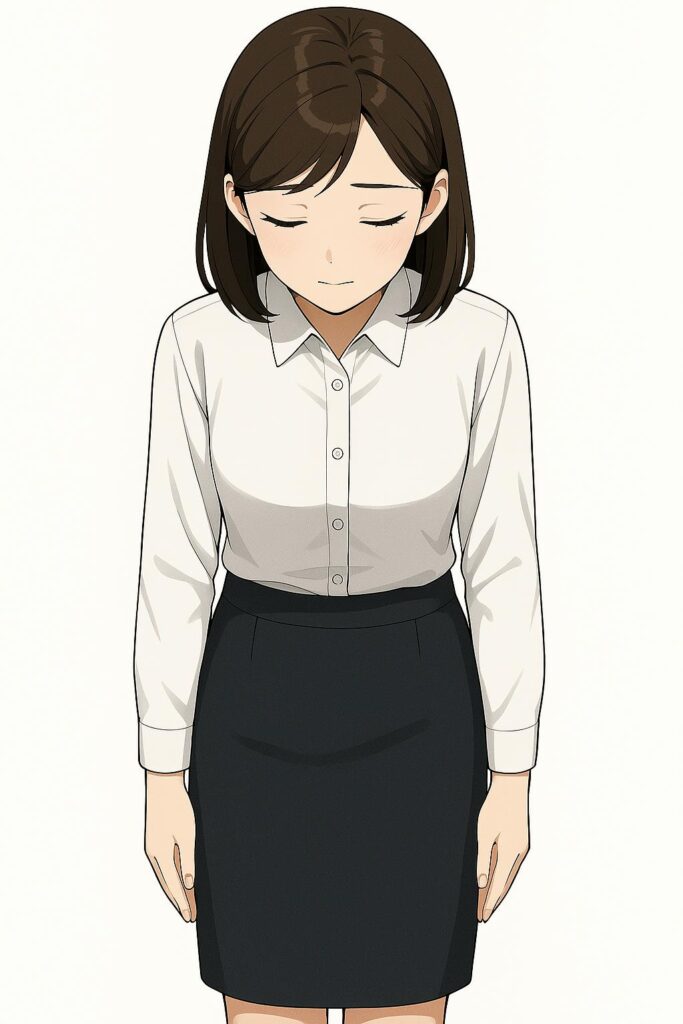
standing with arms at sides, bowing respectfully
片足礼など動きを含むもの
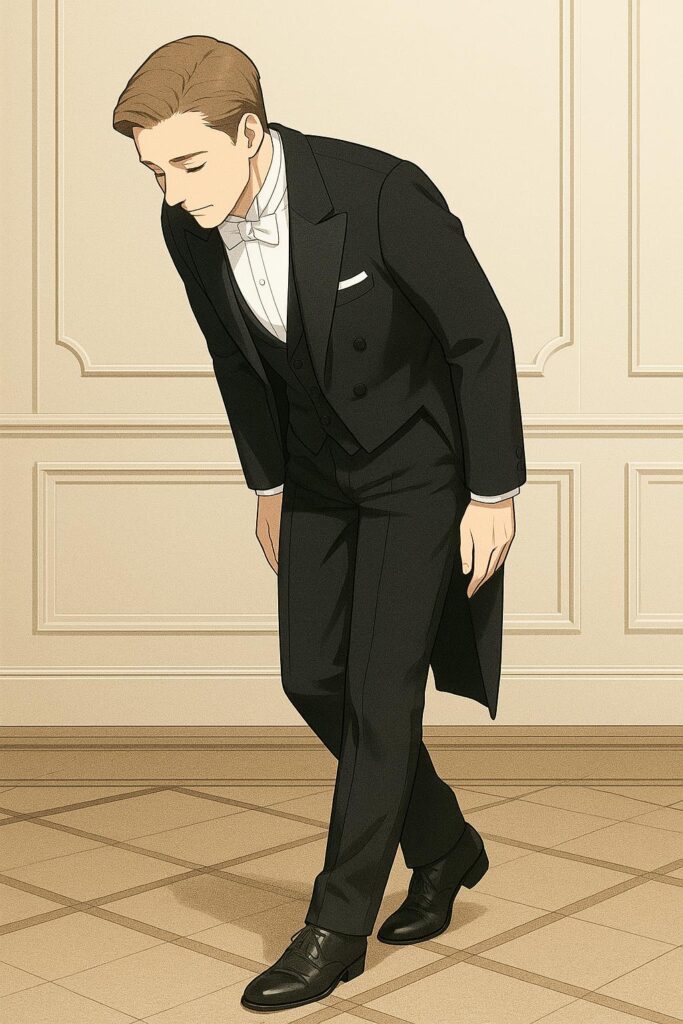
bowing slightly with one foot forward
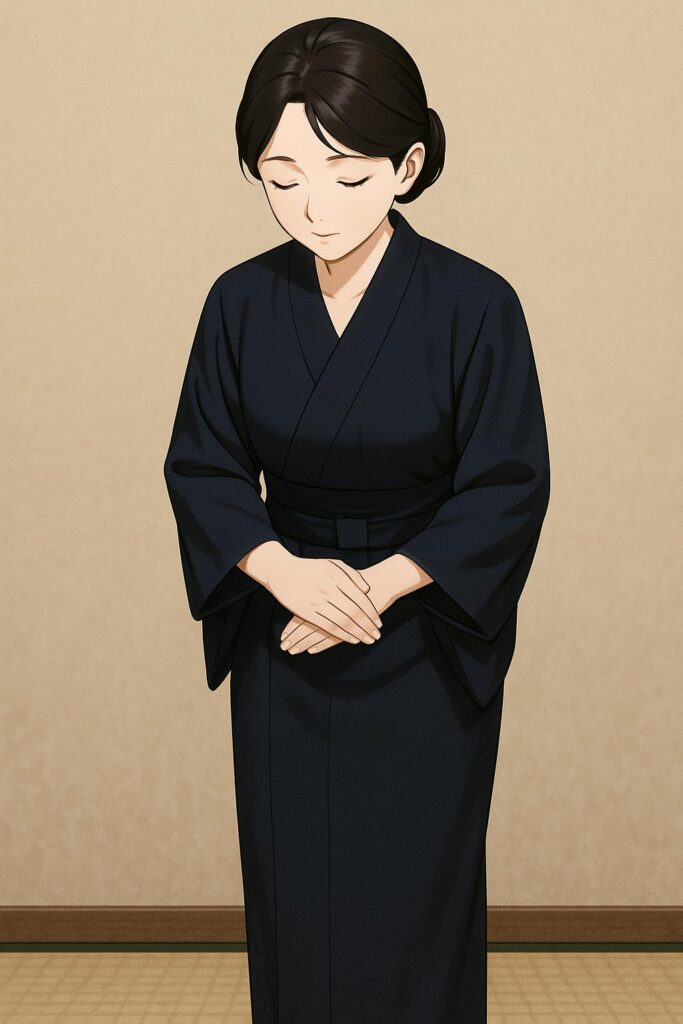
placing right hand over left, bowing slowly
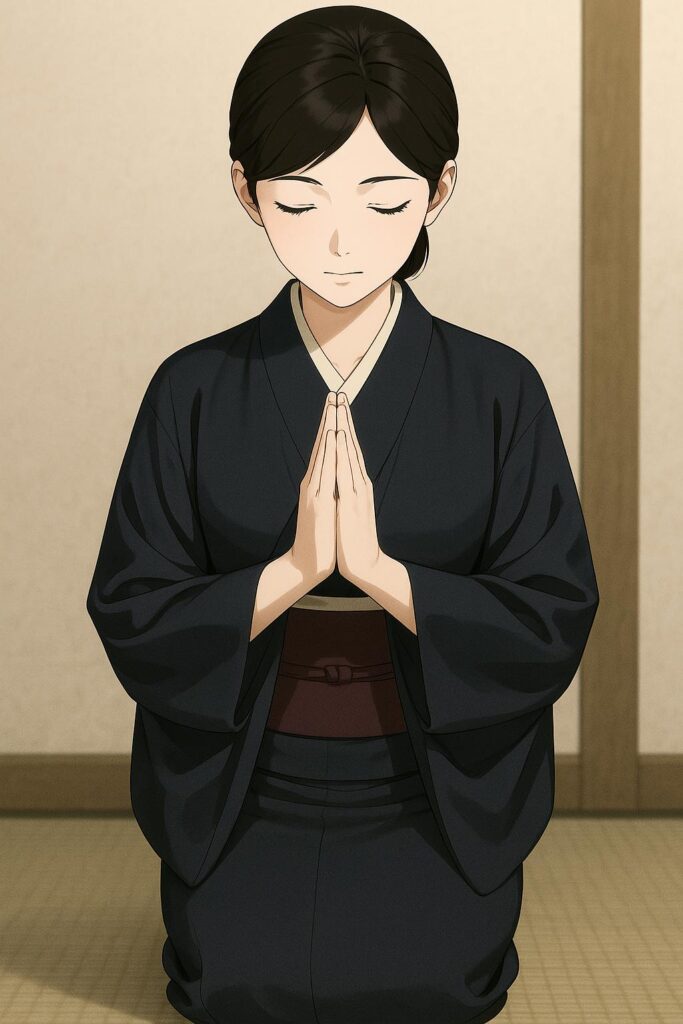
standing with palms pressed together, slightly bowed
文化と衣装で見る|世界の礼節モチーフをイラストにするコツ
色々な文化の礼を見てみると中々面白いです。お辞儀や手の動作は人に敬意を示したり、謝意を示したり礼節のための動作としてある程度の共通点がありますね。
和風・正座での礼
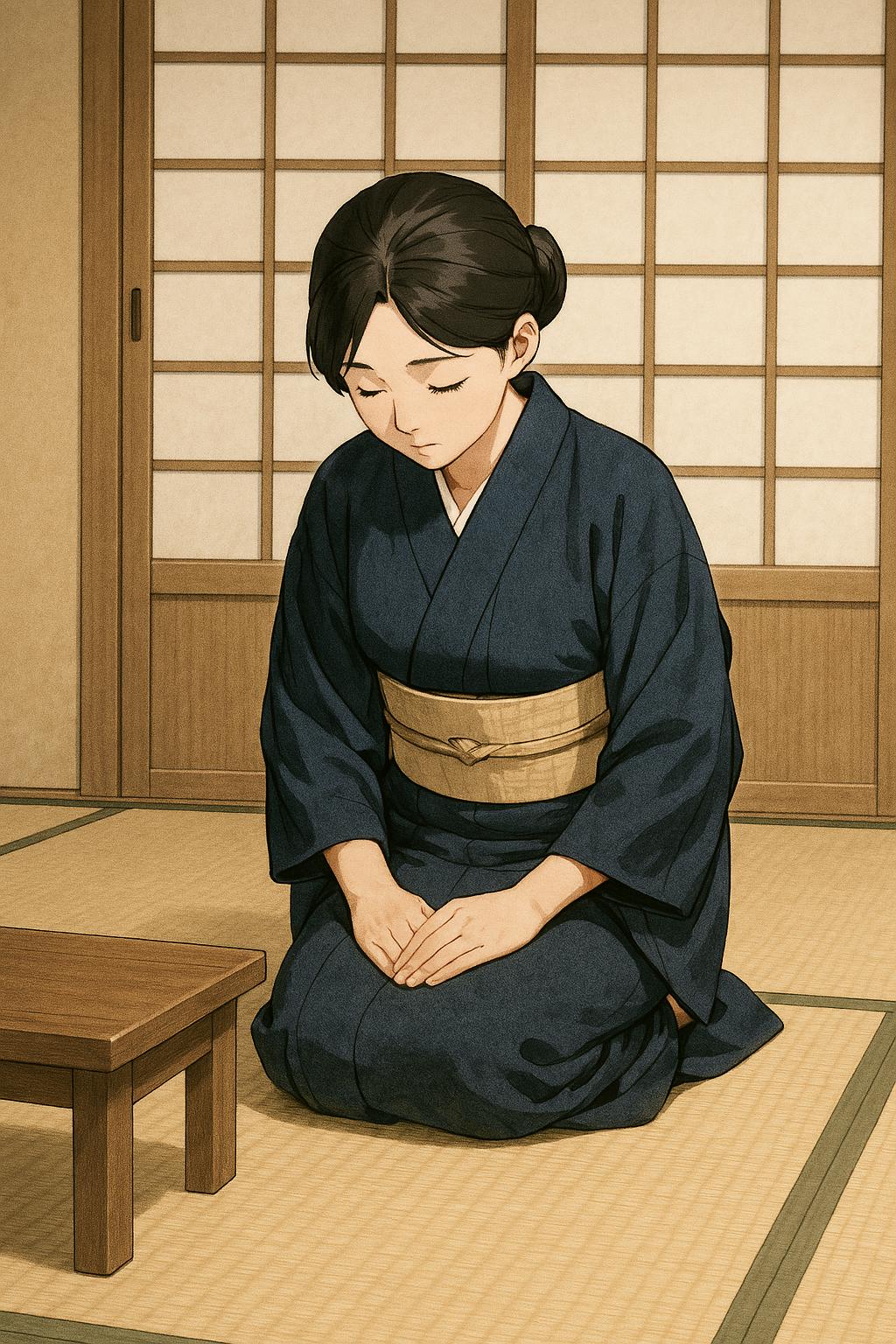
A person in a traditional kimono, sitting in seiza (Japanese sitting posture), bowing respectfully. The scene is set in a traditional Japanese room with tatami mats, a simple wooden table in front, and sliding paper doors (shoji) in the background. The person’s hands are gently placed on their thighs while they bow their head slightly in respect. The atmosphere is calm and serene, conveying deep respect and politeness.
動作: bowing in seiza (traditional Japanese sitting)
背景: 和室、畳、神社など日本の伝統的な背景に合う
衣装: 着物、袴(伝統的な和装)
文化的解説:日本の正座は、座った姿勢での礼儀を示す重要な動作です。正座は、伝統的な日本文化の一部として、敬意や謙遜を表現する際に多く使用されます。特に、和室や神社などの静かな場所で、日常生活や儀式でこの姿勢を取ることが多いです。正座は体を引き締め、心を落ち着けるための重要な文化的習慣でもあります。
和風・深謝(土下座風)
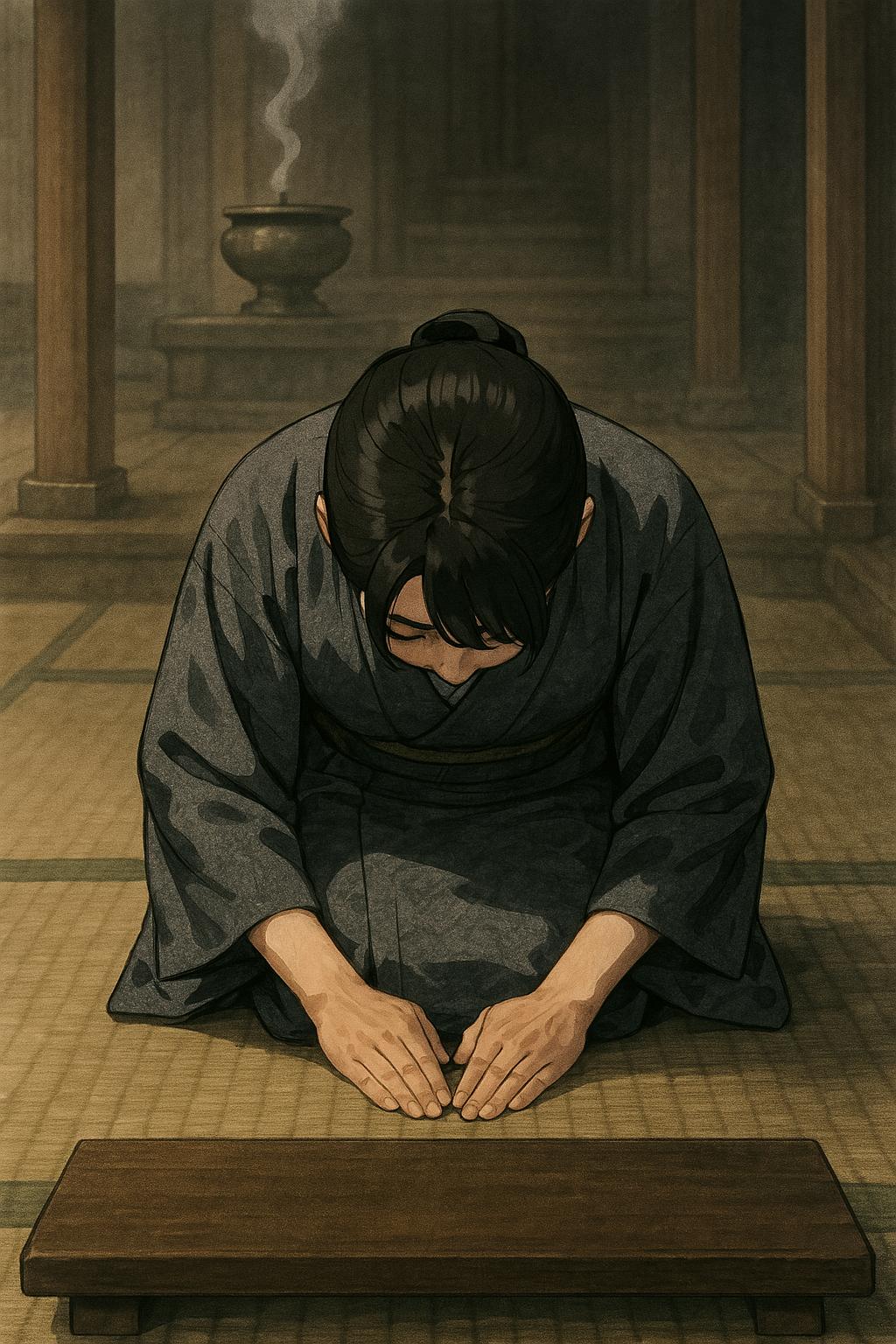
A person in a traditional kimono kneels deeply in seiza, placing both hands flat on the floor as a gesture of deep apology. The setting is a serene Japanese temple with incense smoke gently rising in the background. The atmosphere is heavy with emotion, showing the gravity of the apology. The person’s head is lowered, and their posture reflects deep remorse and sincerity.
動作: placing both hands flat on the floor in seiza
背景: 神社、寺院、または静かな日本的な背景
衣装: 着物、袴、または伝統的な服装
文化的解説:土下座は、日本文化において最も深い謝罪の表現です。文字通り、両手を地面に平らに置き、膝をついて地面に体を下げるこの行為は、相手に対する深い謝意や反省を示します。この動作は、特に重大な過ちを犯した際や、深い敬意を示す場面で見られます。日本では、文化的に非常に重い意味を持つ行動とされ、誠実な謝罪が求められる際に使われます。
和風・巫女風
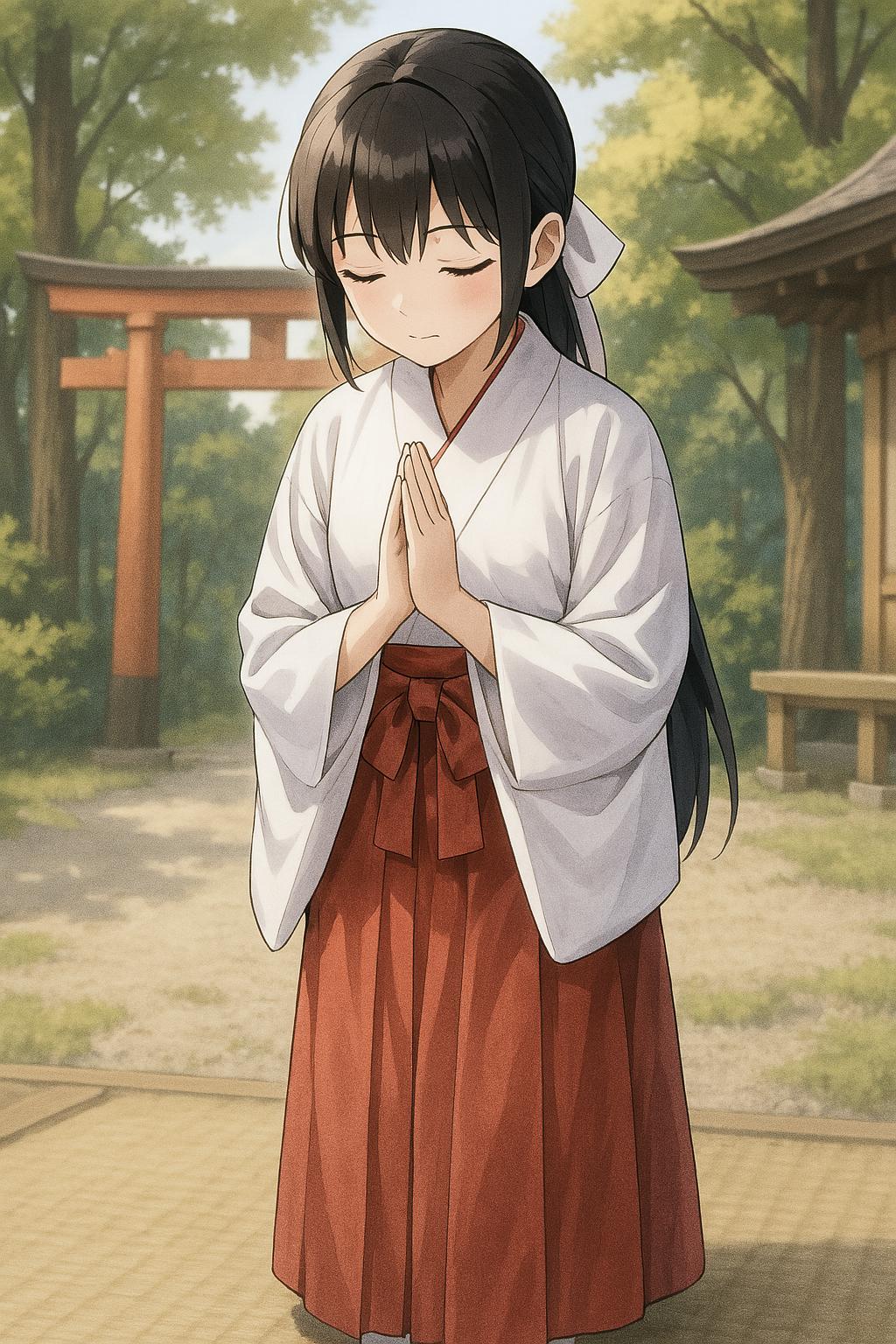
A girl dressed in a traditional miko (Shinto shrine maiden) outfit, with a white robe and red hakama (skirt). She is bowing respectfully with her eyes closed in a gesture of prayer or reverence. The setting is a peaceful Japanese shrine, with torii gates and sacred trees in the background. The atmosphere is spiritual and serene, conveying a sense of purity and devotion.
動作: girl in kimono bowing with eyes closed
背景: 神社、祭りの場、または寺院の前
衣装: 巫女服、伝統的な白衣と赤い袴
文化的解説:巫女(みこ)は、日本の神道において神聖な役割を担う女性で、神社での儀式や祭りで重要な役目を果たします。お辞儀は、神道での敬意や祈りの一環として行われます。巫女は神の使いとして、神聖な儀式を執り行い、神に対する敬意と奉仕の精神を示します。日本の神社では、祭りや儀式の際に巫女が行う動作や礼儀が、文化的に重要な意味を持っています。
和風・伝統的な手の重ね方
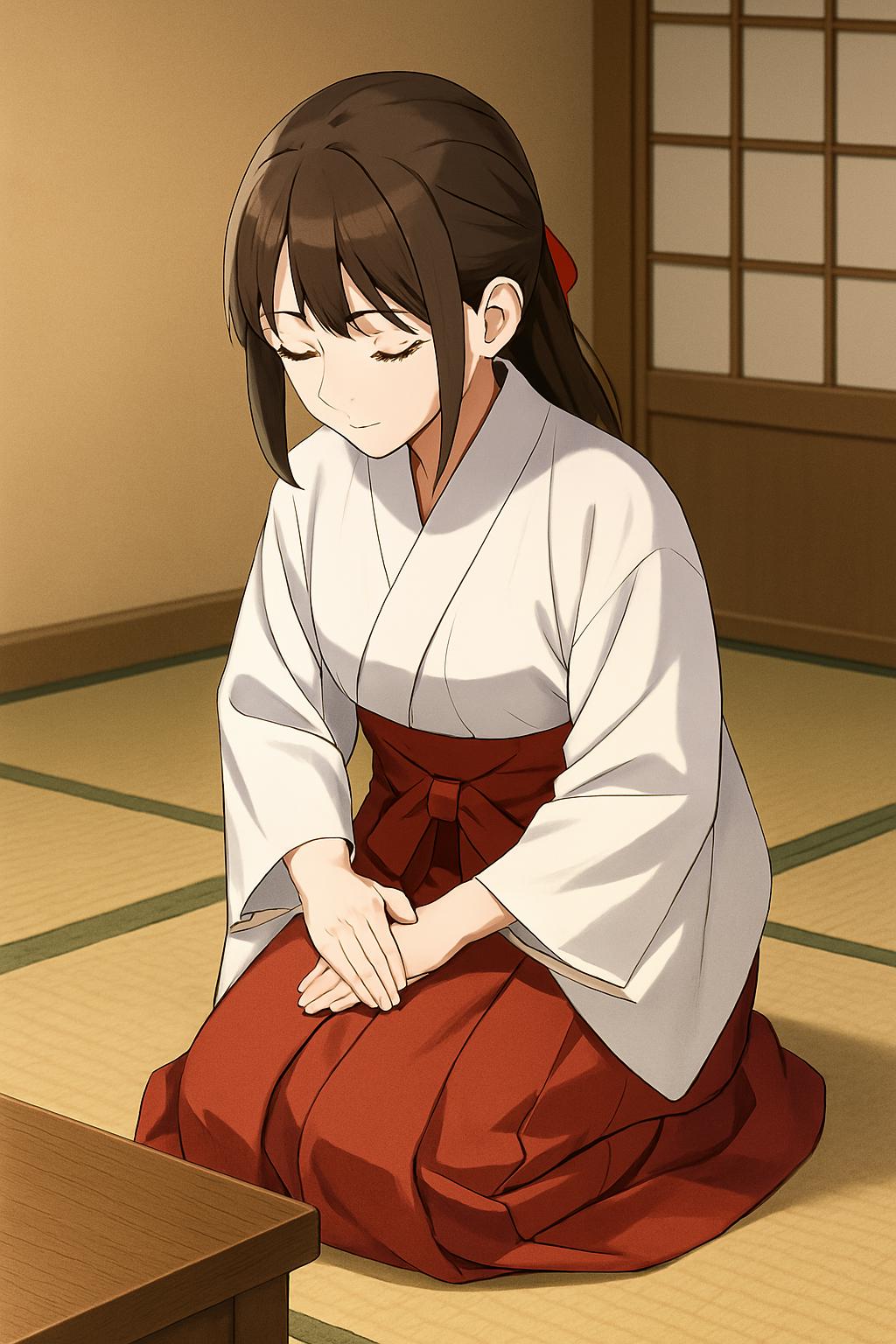
A person in a traditional kimono or hakama, performing a slow bow while placing their right hand over their left, as a gesture of respect and humility. The scene is set in a traditional Japanese tea room with tatami mats and a low wooden table. The atmosphere is calm and meditative, reflecting the principles of tea ceremony or martial arts, where formality, respect, and humility are emphasized. The slow and deliberate bowing shows the reverence that is a core value in Japanese culture.
動作: placing right hand over left, bowing slowly
背景: 茶道、武道、または伝統的な日本の儀式
衣装: 着物、袴
文化的解説:この動作は、茶道や武道など、伝統的な日本の儀式や修行で重要な礼儀の一部です。右手を左手の上に重ねる動作は、謙遜と敬意を示すために行われます。茶道では、この動作を通じて心を落ち着け、相手への感謝と敬意を表現します。武道においても、礼に則った行動は修行の一環として重視されており、技を学ぶだけでなく、心の在り方が鍛えられます。
西洋・カーテシー
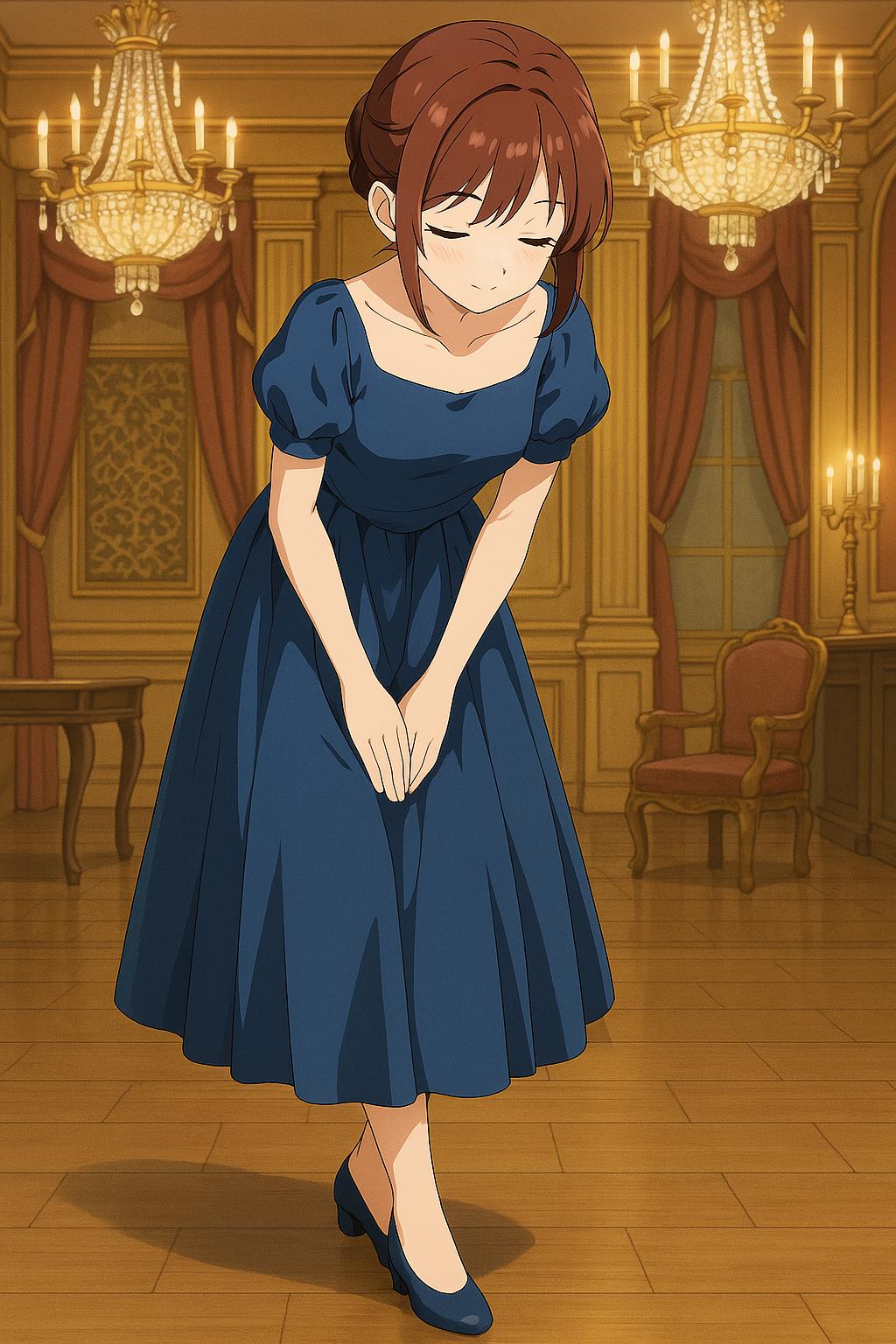
A woman in an elegant dress performing a curtsy, gracefully bowing with one foot behind and her hands resting lightly at her sides. The scene is set in a grand ballroom or royal court, with chandeliers, intricate tapestries, and fine furniture in the background. The curtsy is a formal gesture of respect, typically performed at royal courts or during formal dances, reflecting the elegance and decorum of Western aristocratic society.
動作: curtsying gracefully in a dress
背景: 王宮、舞踏会、または貴族的な背景
衣装: ドレス(西洋の上流階級の服装)
文化的解説:カーテシー(curtsy)は、西洋の貴族社会における礼儀として、女性が相手に敬意を表する際に行う動作です。この動作は、特に王宮や舞踏会で使用され、上流階級の礼儀として根付いています。カーテシーは、女性が優雅で上品な態度を示すために用いられるものであり、優雅な服装や舞踏会の背景とともに、社会的な地位や教養を表現する重要な儀式的行動です。
西洋・騎士風の礼
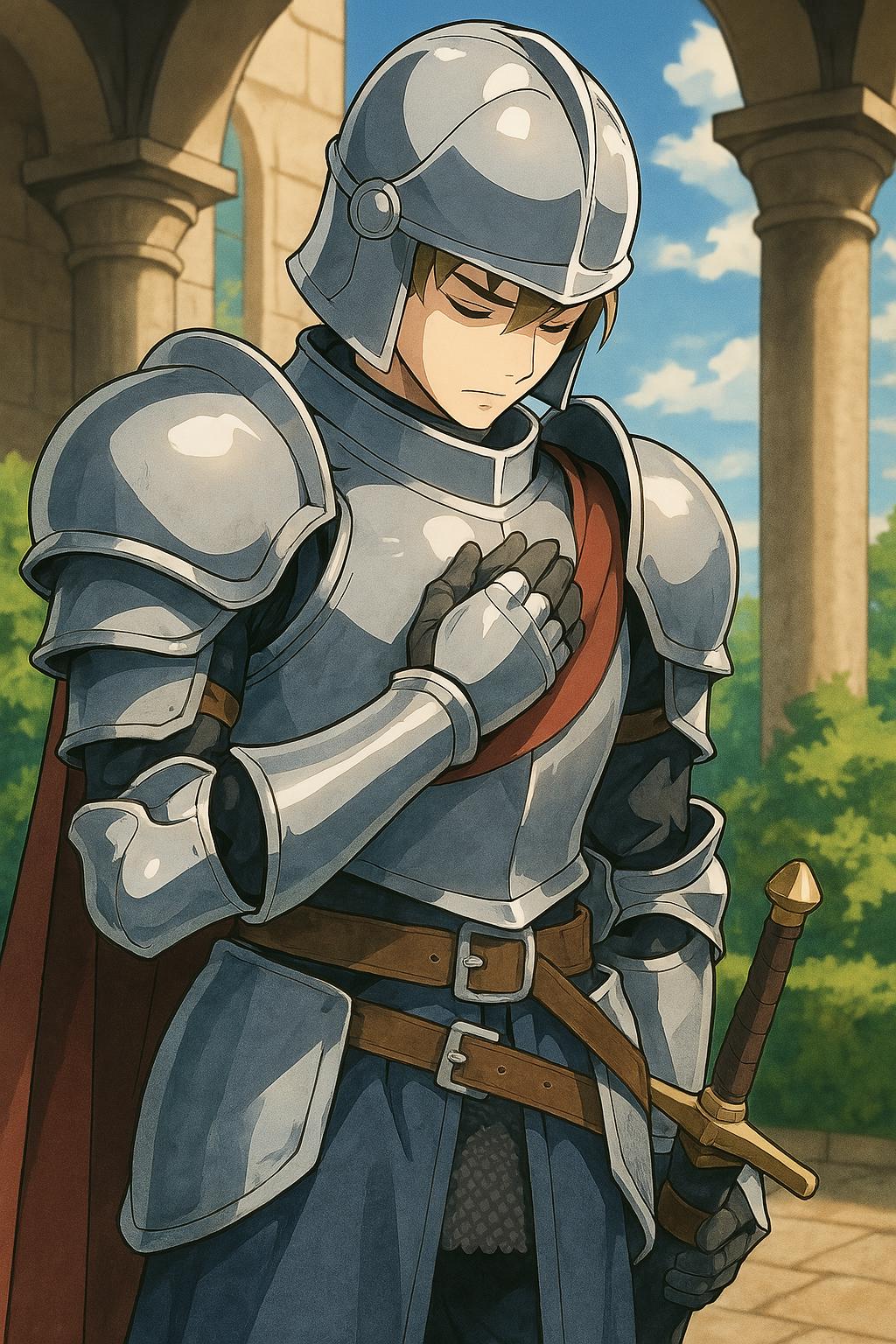
A knight in full armor, standing still with one hand placed over his heart and his head bowed slightly in a gesture of respect or solemn vow. The scene is set in a grand castle hall or an outdoor garden, with the knight’s armor gleaming in the sunlight. The solemnity of the gesture represents a pledge of loyalty, honor, or devotion, often associated with the vows knights take in the medieval chivalric tradition.
動作: one hand over heart, head bowed, standing still
背景: 城、庭園、または騎士の誓いの場
衣装: 騎士の鎧、貴族の衣装
文化的解説:騎士の礼(knight’s bow)は、中世の騎士道における重要な儀式的動作です。この動作は、忠誠心や名誉、誓いを示すために行われ、騎士が主君や王に対して示す敬意の一環です。騎士が誓いを立てる際、胸に手を当てて頭を下げることで、自己の忠義を確認し、名誉を守る意思を表します。城や騎士団の誓いの場などが背景としてよく使用され、中世ヨーロッパの礼儀が色濃く反映されています。
西洋・帽子を胸元で礼
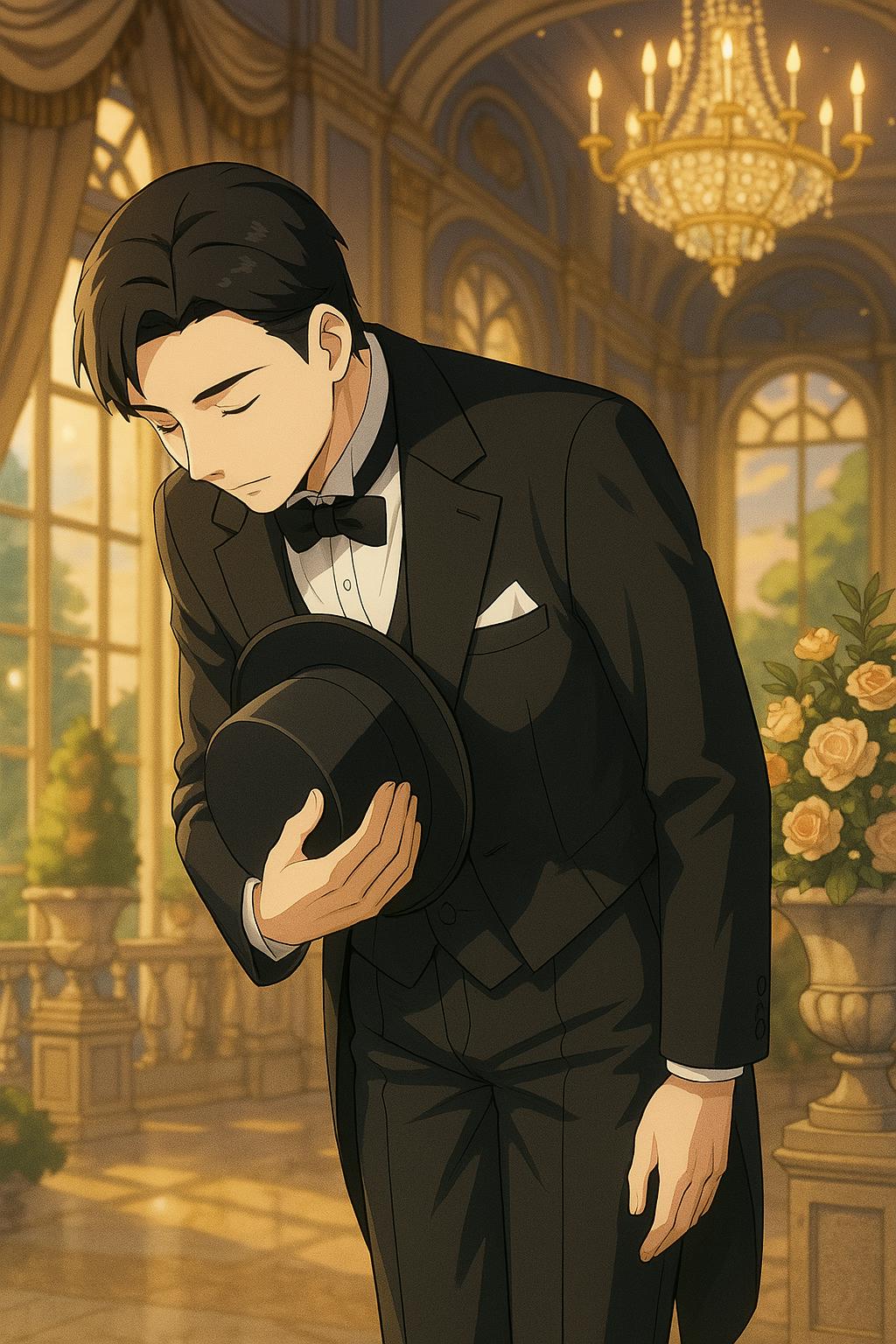
A gentleman in formal Western attire, wearing a tuxedo but not wearing a hat, bows respectfully while holding his top hat with one hand in front of his chest. He has removed the hat before bowing as a gesture of politeness. The background is a grand ballroom or a royal garden, filled with elegant decorations and a luxurious atmosphere. This act symbolizes respect, humility, and decorum, as seen in Western aristocratic society during formal events and dances.
動作: holding hat respectfully in front while bowing
背景: 王宮、舞踏会、または貴族的な背景
衣装: 紳士のフォーマルな服装(スーツ、タキシード、シルクハットなど)
文化的解説:帽子を持ってお辞儀をする動作は、西洋の紳士的な礼儀の一環です。紳士が帽子を胸元で持つことは、他者に対する敬意と謙遜を表現する重要な儀式的動作です。特に、舞踏会や貴族の集まりなど、フォーマルなイベントでよく見られます。このジェスチャーは、社会的なマナーやエレガンスを象徴し、上流階級の礼儀を体現するものです。
仏教・感謝祈りの礼
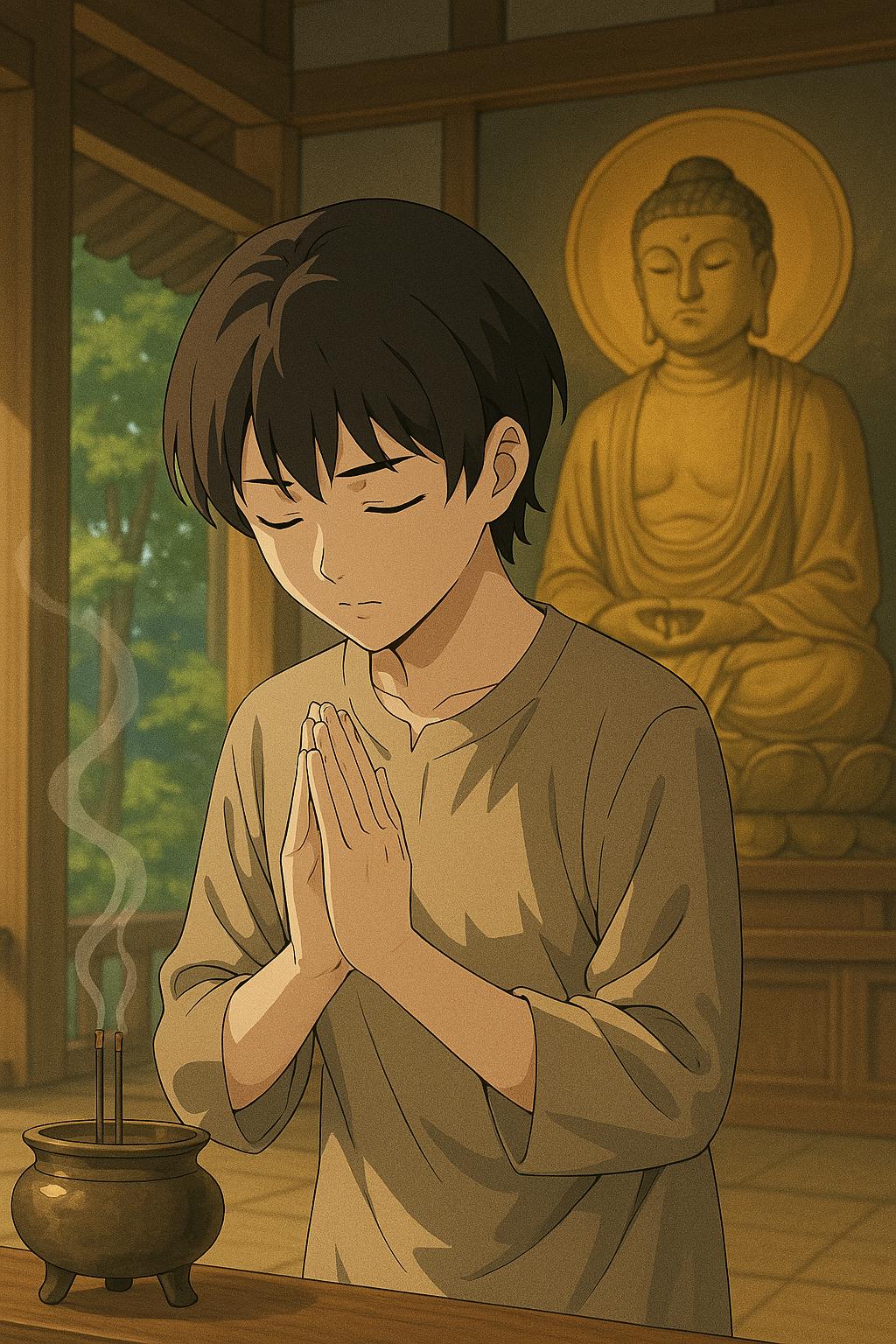
A person standing with palms pressed together in front of their chest, bowing slightly in a gesture of gratitude or prayer. The scene is set in a tranquil Buddhist temple, with incense burning and peaceful surroundings. The person’s posture reflects deep respect and devotion, embodying the principles of Buddhism and the act of meditation. The bowing signifies the offering of respect, gratitude, and spiritual focus.
動作: standing with palms pressed together, slightly bowed
背景: 寺院、仏教的な空間、または静かな修行場
衣装: 僧衣、または伝統的な仏教服
文化的解説:感謝祈りの礼は、仏教の教えに基づく、敬意と精神的な集中を表現する動作です。合掌(手を合わせる)は、仏教においては祈りや瞑想の際に重要な役割を果たし、精神的な清浄さを示します。この姿勢は、仏教徒が仏や師に対して深い尊敬と感謝を表す際に取ります。寺院での儀式や日常的な修行においてよく見られる、深い精神的な意味を持つ動作です。
現代日本・制服での礼

A Japanese middle school student in a standard Japanese school uniform, bowing politely with hands pressed together in front of their chest. The setting is a classroom or the school gate, with other students around them. The child’s posture is polite and respectful, embodying the Japanese value of courtesy. The bow represents the daily greeting or farewell among peers and teachers in Japanese school culture.
動作: Japanese middle school student bowing politely with hands together
背景: 学校の教室、校門、または学校行事の場
衣装: 制服(中高生の標準的な学校制服)
文化的解説:学校での礼は、日本の学校文化において非常に重要な要素です。日本では、礼儀や敬意を示すために、学生が日常的にお辞儀を行います。学校の始業前後や登下校時、または教師への感謝の気持ちを示すために、学校制服を着た学生はよくこの動作を取ります。この習慣は、学生同士の協調性や尊重を育むために重要視されており、社会的なマナーの一環として教育されています。
まとめ|キャラクターの動作・ポーズについて
キャラクターの動作やポーズって、ただの見た目以上に、その人の気持ちや背景を伝える大事な要素ですよね。
礼儀あるしぐさには、言葉がなくても伝わる想いや文化が詰まっています。
今回のプロンプト集では、世界のさまざまな「礼節のかたち」を
誰でもイラストや画像生成AIで使える形にまとめてみました。
「ちょっと丁寧なポーズを描きたい」
「キャラに品のある動きをさせたい」
そんなときに、気軽に使えて、でもちゃんと意味のある動きが作れるようになっています。
創作にリアリティや深みを加えたいとき、
このプロンプト集が動きのヒント帳として役立てばうれしいです。
なお、以下記事にて一般的な動作・ポーズのプロンプトを紹介しています。あわせて参考にしていただけたらと思います。
